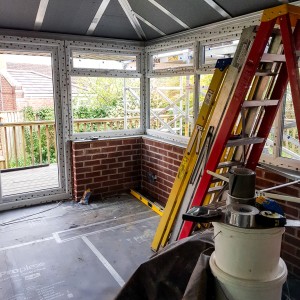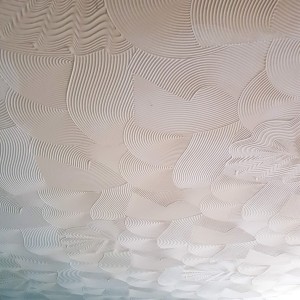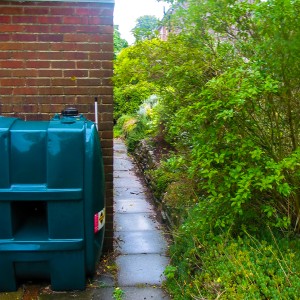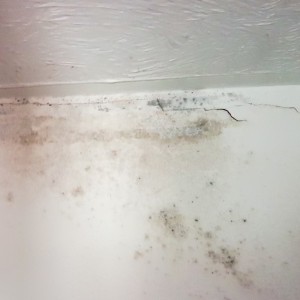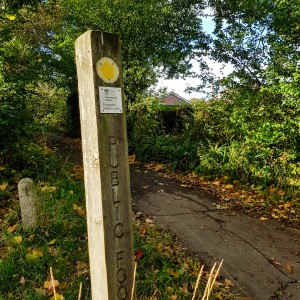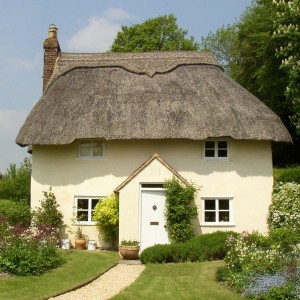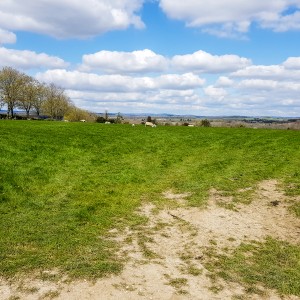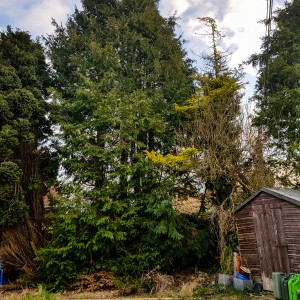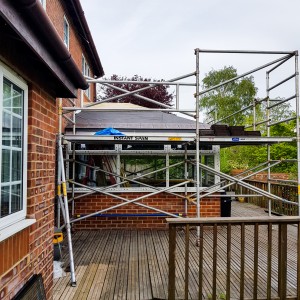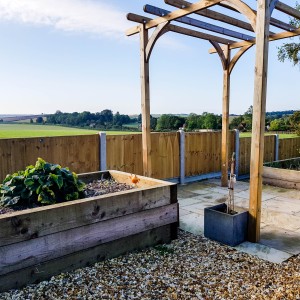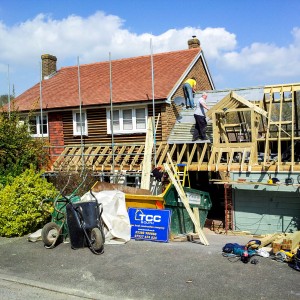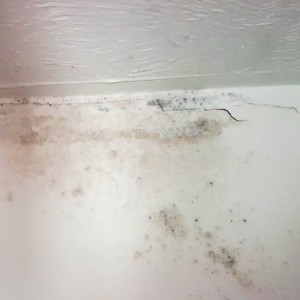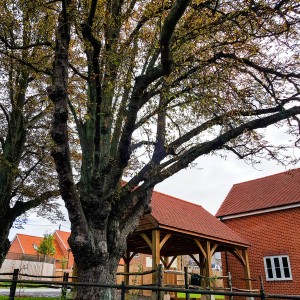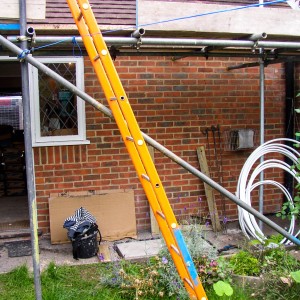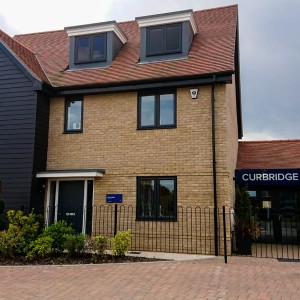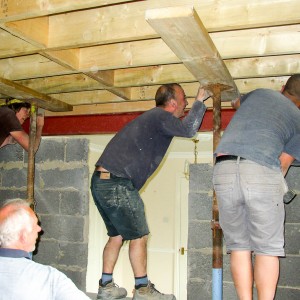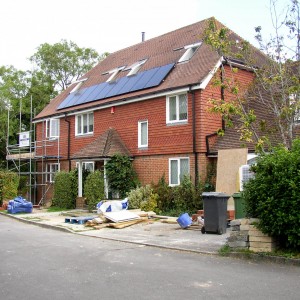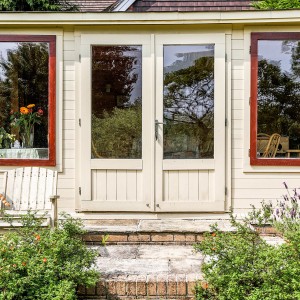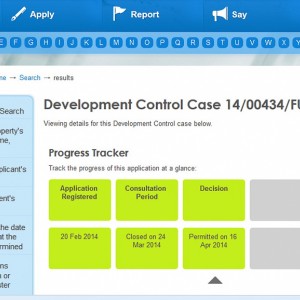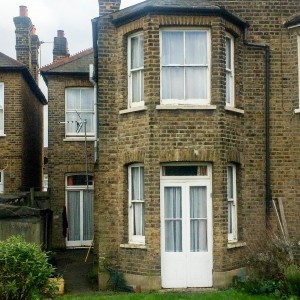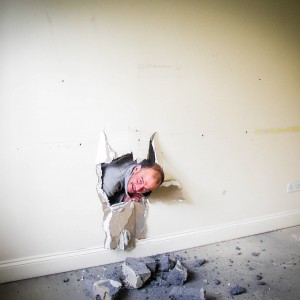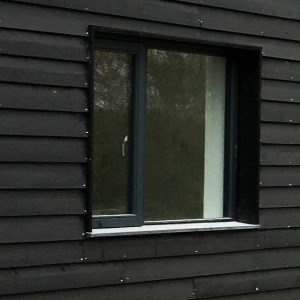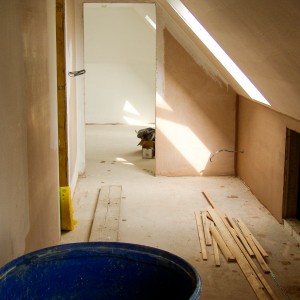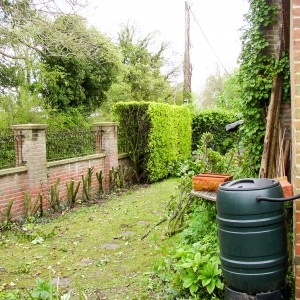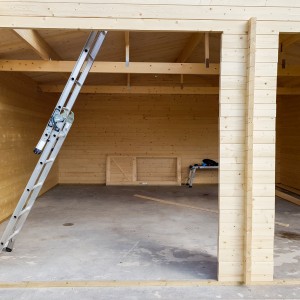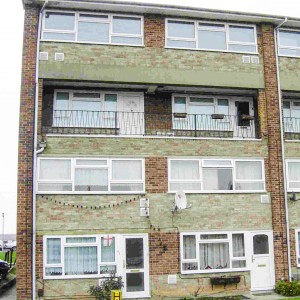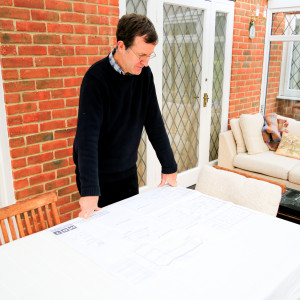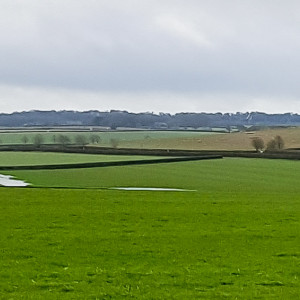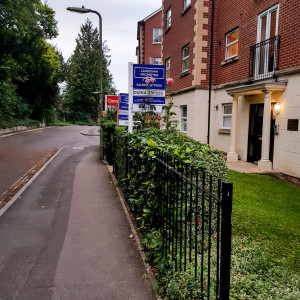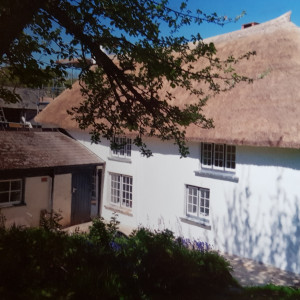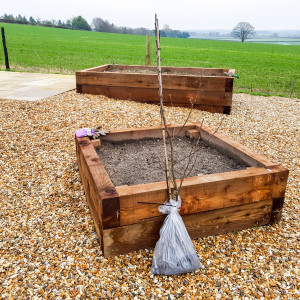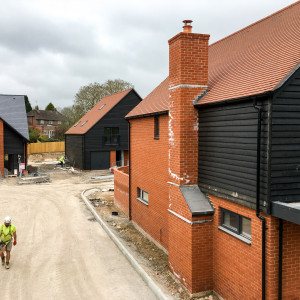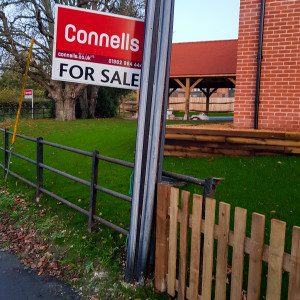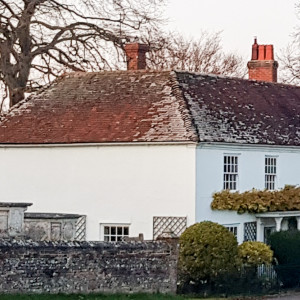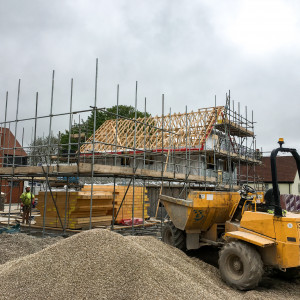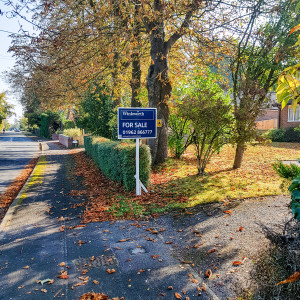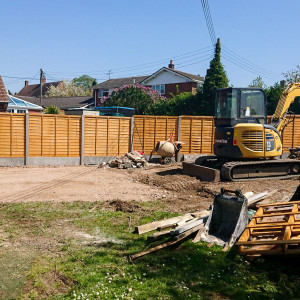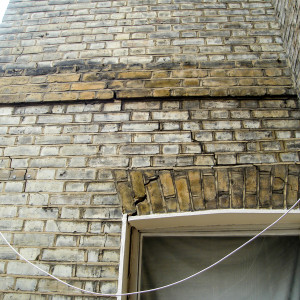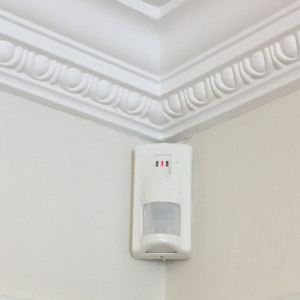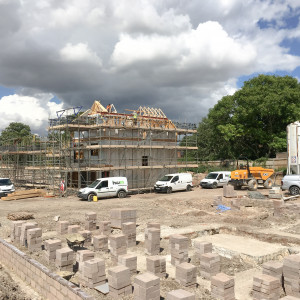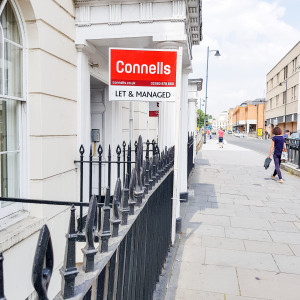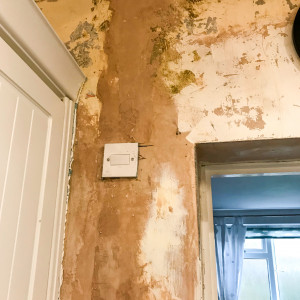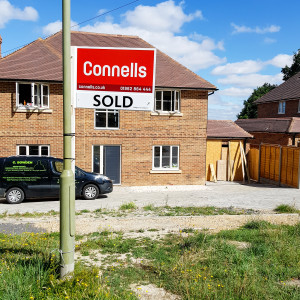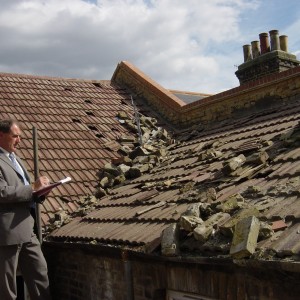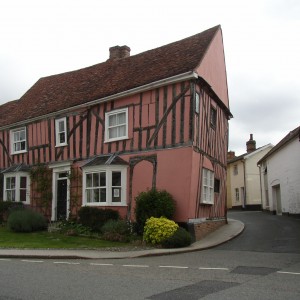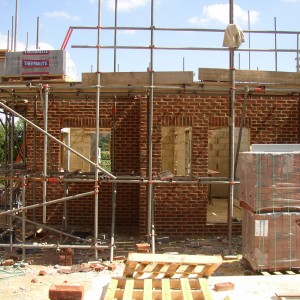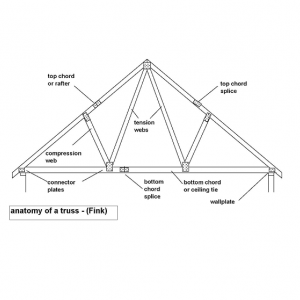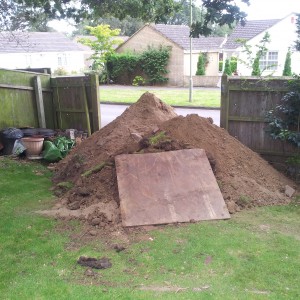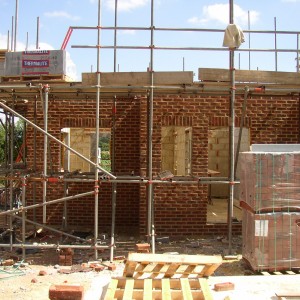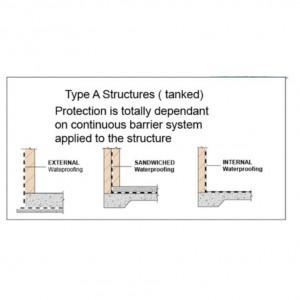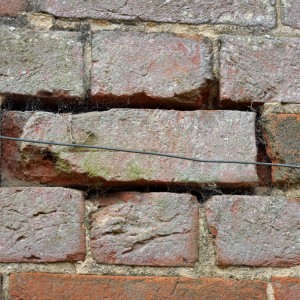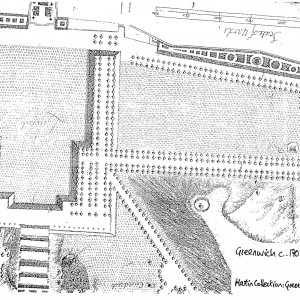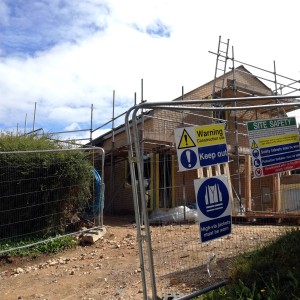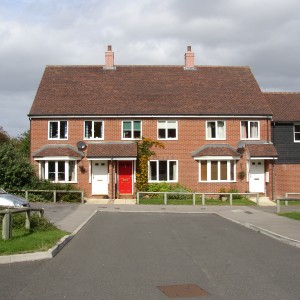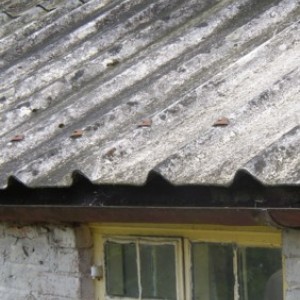You are here: Index of Articles
What Price Heat Pumps?
What is involved in swapping from a boiler to a heat pump?
More Power to Your EV
What are the latest changes to technology for charging your EV?
How to transform underrated 1960s and 70s properties
Ideas and inspiration for your next renovation project
Focus on bat surveys
Bats and their roosts are highly protected, so how do you work around bats on site?
What is home staging?
How to stage a home to look its very best in estate agent photographs
A Garden in Winter
What do you need to do to get your garden ready for Winter?
How to finance an extension project
Whether you’re building upwards or digging deep, we look at different ways to finance a project
Heating the Future
Governments appear agreed that the preferred alternative heating system should be driven by a heat pump
Why the HomeOwners Alliance wants to take the stress out of buying and owning a home
Buying a home is one of the biggest financial decisions of your life and once you’re an owner, the expense and decisions don’t end there.
Powering the future: the rise of electric vehicles and their impact on our world
In a world where sustainability is becoming increasingly vital, electric vehicles are rising both in number and in significance every day
Adapting for visual impairments
The changes that visually impaired people often make to their homes are changes that could benefit most people
Managing our Power Supplies
The power generation industry is undergoing massive changes to the way we generate electricity and the way electricity is sold to the customer.
Asbestos: how to tackle the toxic legacy
Asbestos may have been banned in the UK in 1999 but it still kills thousands of people every year.
How to plan your garden in ten simple steps
Flowerbeds and lawns, patios and decks, firepits and grills – what is the best combination for your garden?
Buying a home with oil fired heating
Oil Fired Heating is something you might come across if buying a property in a rural location. Approximately 1.5 million homes throughout the UK are off the mains gas grid with oil being one of the most popular forms of heating
Damp basements
Basements and cellars will find almost any reason to be damp
Footpaths and rights of way for property owners
With 140,000 miles of footpaths in England and Wales, the chance of having one running past or through your property’s boundaries is not as small as you might think
Beginners Guide to Climbing Plants for Exterior Walls
Climbing plants undoubtedly add charm to a property. However, many homeowners or homebuyers are hesitant about potential damage from climbing plants, as well as managing their growth.
Thatched roof properties, are they worth the hassle?
How many of us have dreamt of buying that Thatched Cottage in the Countryside? Here are some things to consider before taking the plunge
Managing Emotions When Buying a House
The process of finding and buying a house is laden with emotion.
Developing a Property Site
Developing a property site can mean anything from buying a small piece of ground and building a house on it, to procuring a large green field site with a view to building a development of a few hundred residential properties
What is a Property Hotspot?
A property hotspot is an area where, for whatever reason, property prices are increasing much more than the national average
The State of the Property Market. (Are we heading for a storm?)
In the future are houses likely to continue going up? Or are prices finally about to hit the buffers?.
Preparing to Sell Your Home
You only get one chance to make a first impression and that first impression is the one which just might sell your property.
Who do you need to help with your trees?
Tree Surgeon, Arborist, Arboriculturist or Arboricultural Consultant – which one do I need?
Setting down Rural Roots
Many families have moved from cities out into the country during the pandemic, but what should you know before doing this?
Building under Permitted Development
Permitted Development allows building works, such as adding a home extensions or alterations and changes of use, to be carried out without the need to apply for planning permission.
Building near your property boundary
Property boundaries can often be a bone of contention between neighbouring property owners and there is often no definitive answer to the question of where exactly a boundary is
Beginners’ Gardening for Wildlife
Although outdoor projects can be daunting for the novice gardener, there are simple, relatively inexpensive steps beginners can take to help UK wildlife thrive.
Is Your Conservatory Roof Warm or Cold?
A conservatory roof can make a noticeable difference to the temperature in the conservatory, depending on its construction
Add Value to Your Property with a Landscaped Garden
The outside appearance of your home can be just as important as the inside. A well maintained exterior can increase the enjoyment of your home while you live there and never more so than when you are selling it
Creating a Garden Pond
A garden pond can, not only enhance your garden but can help to support wildlife, whose habitat is otherwise diminishing
Multigenerational Homes
Many people are now turning to multigenerational living, to help with rising cost of housing
Bats and Other Endangered Species
What do we need to do to protect our endangered native species?
What Causes Damp in Houses
The main causes of damp in properties are, Condensation, Penetrating damp, Rising damp, all of them caused by different problems, but all are avoidable or treatable if present in a property.
Can I buy a house with my child or in my child’s name?
How can parents help their children get on the property ladder?
Do I need planning permission for solar panels?
Solar panels are becoming increasingly popular, but do you need planning permission to fit them?
What is a Tree Preservation Order?
A Tree Preservation Order (TPO) is an statutory order by which individual trees, groups of trees and woodlands can be protected for environmental reasons, their aesthetic value or for the pleasure of the local public
Replacing a boiler with an air source heat pump
Retrofitting a low-carbon heat pump into an existing property – what’s involved exactly?
Plugging in to Electric Motoring
Electric cars are becoming increasingly popular - but what do you do about charging them?
How do new build mortgages work?
Finding a mortgage for a new build can be complicated, so it is essential to be aware of the pitfalls.
What is the point of an EPC?
When do you need an EPC, and what is the purpose of it?
Conveyancing – What is it and who can I get to do it for me?
Buying or selling a house is a minefield for most of us and as with any other contract we enter into, all the legal aspects of the process must be completed legally and in a timely manner or our transaction may not go ahead as planned.
Choosing your Estate Agent
An Estate Agent’s role is to take the property you wish to sell and present it to the market – your prospective buyers This makes your choice very important
The Role of Drone Technology In Surveying
Drones are increasingly being adopted for a wide range of surveying tasks
No More Summer in the City
The pandemic has seen a rise in home working, is this also leading people to move from cities to rural locations?
My builders have the radio on loud while I’m trying to work – what should I do?
In 2021, many of us are facing both living and working on a building site if you’re having alterations made to your home
Building and decorating jobs to do in the summer
Following the pandemic, more people are looking to improve their homes, especially over the summer months
Can I claim back tax for working in a garden room?
With more of us working from home in the wake of the pandemic, offices in cities are sitting empty. Homeowners are also considering how they can work remotely
The Ins and Outs of Planning Permission
What exactly is involved in getting planning permission?
What is the house buying process?
Buying a house or flat can be daunting, especially for first-time buyers. From mortgage deals to the legal side, there’s a lot to think about.
Creating an outdoor summer living space
Bring an extra dimension to your home with a well-planned garden.
How hard is it to convert a downstairs room to a utility room?
Increase the usable space in your home by as little as 10% and you can increase its value by 5% – so long as the room is practical
Creating open plan layouts in older properties
Planning to go open plan? Here are some key questions to consider before knocking through
The pros and cons of sheep’s wool insulation for your home
The question is which type of insulation material is best - and what are the benefits of using certain types over others?
Gaps in the government fund for cladding
More than three years after the fire at Grenfell Tower claimed 72 lives, injured a further 70 and made hundreds homeless, the Government is finally putting some money where its mouth is
Loft conversions: ideas & inspiration
Loft conversions don’t have to be boring and predictable. See our tips for the top
Hydrogen boilers from 2025?
UK households could have their homes and hot water heated with ‘green’ hydrogen gas as natural gas boilers are phased out within the next decade.
Space-saving ideas for your home
Maybe all you need is a re-think of your current space and to implement some savvy space-saving ideas to get the most out of your house?
Rainwater harvesting
How it can lead to long-term savings on water bills and create a more sustainable way of life.
What is a sole plate?
If your building has a timber frame, then it has a sole plate or a cill plate as they are sometimes also known.
Is timber frame construction a thing of the past?
It is almost impossible to tell whether a home is timber framed just by looking at it, so you might imagine it is a practice that we have long-since forgotten. You’d be wrong
Do I need a party wall surveyor?
Party walls are the physical boundary between your home and your neighbour. Aside from the bricks between terraces, flats and semis, the definition also includes any wall that separates your gardens.
Does mould in the bathroom call for a refit?
Inadequately ventilated bathrooms are ideal conditions for mould. You can help by opening windows, installing an extractor and wiping down surfaces after use, but sooner or later every bathroom will start to show its age – often as mildew or mould in hard to reach places.
The Property Market under Covid-19
What is happening to the property market under Covid-19? The view of JJ Heath-Caldwell, Managing Director Local Surveyors Direct
What do you need to create the optimum work-from-home space?
The coronavirus pandemic has forced all of us to re-think how and where we work. And with 60% of the UK’s adult population currently working from home, it has forced many of us to re-consider how we use our homes and the spaces we need
House jobs to do while in self-isolation
Isolating from the world is tough, but for many, it has become a time to do the jobs on the house and garden that are always on the to-do list but never seem to get crossed off.
How to host house viewings with the threat of Covid-19
Government guidance is changing by the day – sometimes by the hour – so it is important to take note of the latest official advice with regards to keeping safe in these unprecedented times. This has implications if you are trying to sell your house.
Creating a design brief
The early stages of working with a professional designer and creating a brief are key for a successful home extension
What you need to know about your septic tank.
Buying a property with a septic tank can be a daunting prospect, especially if you have never come across one before
Do you have to admit flooding when selling a property?
One in six UK homes are located in areas where there is a significant risk of flooding. With extreme weather and flooding becoming more prevalent, that number is only ever likely to grow, which can have serious implications for the property market.
Should I sell my house without an estate agent?
Estate Agents perform a vital role in the selling process – but you will pay handsomely in return. How much depends on the kind of home you are selling and the service that you require.
What is an earth house?
Cool in summer and warm in winter, environmentally friendly and potentially cheap: earth homes could well be the answer to our future housing needs.
Planting trees in your garden
From tiny acorn to mighty oak: there are few things more satisfying than planting a tree and watching it grow over the years. But choose carefully as trees should only be planted where there is space to grow
In a new build home, how much control do I have over décor?
Buying either off plan, or before a new-build house is completed, gives you the opportunity to influence the finish – but how far can you go?
How much should I put in my budget for surveys?
What does a survey cover and how much do you need to budget to get the lowdown on your next home? Here is what you need to know.
What are the different parts of a roof called?
Here is our handy guide to the ten key parts of your roof, what they are called and what you need to look out for to get them ready for colder climate.
Restoring a wooden floor
There could be a stunning wooden floor waiting to be discovered under your carpet. But how do you bring a scratched wooden floor back to its beautiful best?
Making a wildlife-friendly home
Making a wildlife-friendly home very much depends what kind of wildlife you’re talking about. Few of us want to share our domestic space with spiders or silverfish. And rats and mice are rarely welcome. In fact, few of us want any kind of animal actually in our homes except ourselves.
Snagging Surveys for New Builds
It is sensible to instruct a surveyor to carry out a survey on your property so you can ask the developer to rectify any faults before you move in. These types of surveys for new properties are called Snagging Surveys
Is Japanese Knotwood really that bad?
Is finding Japanese Knotweed a problem? How do you identify it?
What’s the latest with house prices?
Amid all the uncertainty over Brexit what’s happening to house prices? Is now a good time to buy or sell?
Boundary disputes and Bad Neighbours
What happens when you and your neighbour disagree about a wall or a fence?
What is underpinning and what is it for?
In a nutshell, underpinning a house is when you have to strengthen the foundations of your existing property because they are not strong enough to hold up the rest of your building anymore
How to reduce your chances of being burgled
A home owner describes his experiences with being burgled and what he suggests to help prevent that happening to you
I want an Eco-house but don't know where to start?
With energy bills set to rise over the next 10 years, it is not surprising that more and more homebuyers are looking to buy green
Tips for buying an investment property
Buying a property for investment is an exciting project but it can also be quite daunting. Here are some tips that may help you through the process.
All you need to know about damp - signs to watch out for when buying
Damp is hard to see with the naked eye. It can appear rapidly after heavy rain or flash flooding or can be very slow to emerge. Discovering the tell-tale signs can sometimes be challenging – especially when you are suffering from house buying fatigue or are fitting in whistle-stop viewings
What is dry rot?
Crumbly wood in your house or concentrated patches of fine orange dust? You might have the first telltale signs of dry rot.
Will the Price of Houses Continue to Go Up?
A common question among many of my friends is regarding the house market. In the future are houses likely to continue going up? Or are prices finally about to hit the buffers?.
New regulations for landlords
HMO licences, minimum room sizes & mortgage relief cuts –new rules for landlords to be aware of
Case study: industrial-chic kitchen diner
A single storey rear extension transforms a terraced home in Southsea. Smart space planning, thoughtful use of texture and some bargain buys have created a kitchen diner with a polished industrial-style look
What does a Surveyor do?
Surveyors are highly-trained, property professionals who can offer expert advice on the value and condition of a building. Chartered is the mark that shows a surveyor has achieved the ‘gold standard’ of professional competence. In the UK, they are usually members of the Royal Institution of Chartered Surveyors (RICS).
Why do I need a survey if I have a mortgage valuation?
Mortgage valuations are not in-depth surveys. They don’t take long (about 15 to 30 minutes) and involve only a brief look at the property to assess its value. The valuation report is prepared for the benefit of your lender – bank or building society – and not you, the borrower, even though you may have to pay for it. The sole aim is to assess if a property is worth the agreed sale price before the lender approves your mortgage. The evaluation report may note obvious problems affecting the property’s value but it won’t give you a full picture of its condition.
Conservation Areas
What is a Conservation Area and what are the implications of developing a property in such an area?
Listed Buildings
What is a listed building and what responibilities does owning one bring?
Buying a property - potential noise problems
When buying or renting property, people are rightly starting to think harder about noise issues that may affect them once they get to their new home
Lifetime ISA
With rising property prices, first time buyers are finding it increasingly difficult to save for a deposit without asking parents for help. The new Lifetime Isa has been launched by Government as a way to get a foot on the property ladder and save for a pension at the same time. So how does it work and what is the catch? Lifetime Isa
A guide to Conveyancing
Ten years ago, most people saw a local solicitor in their high street. Today there is more choice available. In addition to traditional lawyers with training in different aspects of the law, there are also licensed conveyancers who have less legal training but specialise in property. Conveyancing services are also available online or through call centres. So how do you choose – and what are the pros and cons?
Why should you consider having an Electrical Report?
Many people buy properties without having the electrics checked out. But is it a risk worth taking?
How to save for a deposit
Home ownership has fallen to its lowest level in 25 years, partly due to rising deposits required to get a mortgage. House prices are more than five times the average wage - up from three in 1997. Unless you have family willing to stump up large cash sums, raising the deposit can be the biggest hurdle to homeownership. So how can you save for a deposit?
10 Top tips to sell your home
First impressions really do count when it comes to selling property. Most prospective purchasers know if they want to buy a home within a minute or two of walking through the front door. So what can sellers do to boost the attractiveness of their homes without spending a fortune? Follow these simple steps to present your home at its best.
Help To Buy Schemes
The Government launched the Help to Buy scheme in April 2013 to help people struggling to get on the property ladder as well as home owners with not much equity who want to step up. The initiative makes it possible to purchase a property priced up to £600,000 with as little as a five per cent deposit. The government will then step in to boost this either with a loan or a mortgage guarantee.
The Residential Property Surveyors Association (RPSA)
The Residential Property Surveyors Association (RPSA) is the U.K.’s only professional body whose sole function is to focus on the interests of specialist independent residential property surveyors. It is a not-for-profit organisation dedicated to promoting the services of independent surveyors.
How Much Does it Cost to Move House?
Most people know they need to save for a deposit to get a mortgage for their first home. But prospective property owners might not realise there are a raft of other fees, charges and taxes they also need to pay –running into thousands of pounds.
EARTH BUILDINGS AND THEIR FAILURES REVISTED
This paper was written by Chris Shapland and presented at a CPD Conferences Course
Arches and Lintels
Part 1 - Arches
Arches and lintels are found wherever it is necessary to support a wall etc over an opening which is usually not more than about two metres wide. They provide support in completely different ways and an understanding of this is fundamental to selecting, specifying and assessing them. Arches depend for their support on the masonry surrounding them. This provides the resistance to the forces generated by the shape of the arch and the loading on it. This Paper focuses on the arches themselves and does not include problems arising in arches from external causes such as subsidence or movement of the building itself.
Arches and Lintels
Part 2 - Lintels
Lintels are commonly used to span openings in the walls of buildings. This paper examines the different types of materials used for lintels, their historical use and advantages / disadvantages, and the defects associated with lintels and their use.
Defects by Decade
This paper examines the home as an evolving product. Over the passage of time, the changing tastes of the population coupled with emerging technologies have fashioned the simple house into a series of stereotypes which reflect their era of building. Some changes in techniques, materials and form have brought benefits to homeowners, unfortunately others have not. An examination of these changes has characterised their influence on structural defects found in real properties. This paper seeks to list those defects most commonly seen in particular eras and charts their origin.
Flood Risk and Financial Costs - Case Study
Case study of efforts to obtain that redress after coastal flooding during the winter of 2013-2014.
Dilapidations: A Practitioner’s Guide
This lecture concerns dilapidations and the law of dilapidations in leasehold commercial property held on business tenancies.
The Role of Surveyors in Reducing Fires in Thatched Buildings
This talk is an extract from the Understanding Thatched Roofs course that Charles Chalcraft presents for RICS Training in Hampshire and in Suffolk. He also presents this course in Devon in a 15th Century thatched Church House. This is the only course in the country that trains surveyors how to survey thatched properties.
Flood Risk Explained
The summer of 2012 was the wettest on record with over 7,000 properties flooded in the UK. 5 million properties are at risk from flooding from rivers or the sea with a further 2.4 million at risk from surface water flooding. Climate change is making flooding more frequent and today's extreme event may be the norm in the future. Flood risk is now a major concern for home owners, potential home buyers and developers.
Negligence and Error in Surveys and Valuations: The Margin for Error Revisited
As is always the case in a downturn, lenders and borrowers tend to turn to the one party in the process who holds professional indemnity insurance to try and recoup some of their losses; the valuer. The period of instability following the onset of the Global Financial Crisis (GFC) has been no exception. Although few negligence cases actually reach court, there have been a number of cases where some key aspects of the negligence and error issues have been developed and refined recently. These have included developments in the 'margin for error' question – what level of valuation is deemed to be negligent, a question that the courts and valuers have been arguing about for many years, as well as rulings on contributory negligence, the extent of loss and on valuing in thin and unstable markets.
Tree Related Subsidence Damage
Low rise buildings on shrinkable clay soils are vulnerable to movement and structural damage due to moisture abstraction by trees and other vegetation groups. Over the last 10 years domestic subsidence claims number between 28,000 to 55,000 costing the insurance industry £140M - £400M annually. A significant proportion of these claims relate to the influence of trees and other vegetation groups. Tree loss due to subsidence damage claims to low rise buildings is a contentious issue in the UK. Undoubtedly tree removals can have a high negative impact on amenity and the environment at the local level. At the wider level, the impact is generally less than commonly thought. The issue is frequently covered in the national press with hysterical claims of mass tree removals instigated by insurers and exaggerated evaluations of risk from trees based on ignorance, limited data and lack of evidence.
An Overview of Woodworm Infestation and Fungal Decay
This paper gives an overview of the life cycle of beetle and fungal attack, how infestation and decay manifest themselves in buildings. We will give tips on how to identify the different species and how to determine if there is activity or not. We will also look at the various courses of action/treatment to eliminate the problem.
The Party Wall etc Act 1996 A Brief Overview for Surveyors
This paper was written to complement a talk given by Stuart Frame to a group of Surveyors on a training course in October 2012 run by CPD Conferences. The paper was primarily aimed at those practising as party wall surveyors. It discusses the applicability of the Party Wall Act where no initiating notice has been served, and in particular the use of retrospective awards. Surveyors' duties in administering the Act is also examined, with consideration to some of the difficulties that can arise in practice.
Whose land and which boundary - where?
This paper was written to complement a talk given by Carl Calvert to a group of Surveyors on a training course in October 2012 run by CPD Conferences. The paper covers the role of an Expert Witness relating to Boundary Disputes. In particular; Civil Procedure Rules 1999, Expert Witness rules (Expert Witness Institute), Practice directions. The differences between a legal boundary and a physical boundary? The paper also outlines the best assistance a surveyor can give the courts on boundaries?
CABE (Chartered Association of Building Engineers)
Formed in 1925, as the Incorporated Association of Architects and Surveyors, the Association of Building Engineers (ABE) is a leading body for professionals specialising in the design, construction, evaluation and maintenance of building construction. Its members practise across the United Kingdom, mainland Europe and around the World, and work in both the private and public sectors. The ABE provides the prime qualification of Building Engineer, a title that exactly reflects the professional expertise of members.
Subsidence and Other Cracks
Since the early 1970's, building insurance policies have included 'damage caused by subsidence, heave or landslip' or similar wording.
Thermal Improvement Techniques for Old Buildings
About 40% of the UK housing stock is of solid walled construction and this amounts to approximately 4.4 million houses that were built before 1920. Often built of lime mortar these buildings are of a vapour permeable construction and so function differently from modern cavity walled houses. With many of these old buildings being cold and energy inefficient, there is often a desire to thermally upgrade them, however, the latest research shows that many of the current refurbishment methods will lead to real problems, often damp and condensation. This talk gives an overview of thermal improvement techniques and the specification of breathable materials for old buildings.
Traditional & Mineral Paints For Historic Buildings
This paper covers The origins of paint and its development The need for old buildings to breathe The need for timber to flex Paint types
An Introduction to Air conditioning Inspections
Air Conditioning TM44 Energy Report Guidelines Directive 2002/91/EC of the Energy Performance of Buildings Article 9, requires member states to introduce measures to establish a method of checking all air conditioning systems, by formal inspection and report means, to minimise energy usage and carbon footprint.
Insuring Against a Subsidence Risk
Ensuring your property is insured against the risk of subsidence or other forms of structural movement is absolutely crucial. Because of the high costs involved, most insurers prefer not to quote for people who wish to insure their buildings in areas that are perceived to have a high risk of subsidence, even more insurers will decline to offer a policy for properties with previous subsidence damage. homeprotect is a specialist provider of insurance which caters for residential property with a history of subsidence.
Managing The Client
My brief today is to share with you some recollections of six projects which turned “bad” for the professionals involved because the client was not happy. As I am sure all of you are aware, keeping clients happy is not an exact science; they can become unhappy when you have done nothing legally, technically or personally wrong. I am not therefore aiming to set out for you a systematic method of keeping clients happy (although if any of you think this can be done, I’d be very glad to collaborate with you on another paper!): rather, I wish to explore with you the challenges for professional and client together of facing the unusual.
The Challenges of carrying out restoration work on old structures
Some case studies showing the the challenges of carrying out restoration work on old structures
Water Damage to Buildings
The presentation will touch upon Smithers Purslow’s experience in this field and then look at typical sources of moisture in buildings, then explain typical effects on common building materials and construction techniques. Consideration will then follow as to how to restore water tightness to buildings and subsequent drying out that may be appropriate. This will be followed by an explanation of drying certification from specialist companies and typical qualifications in documentation that they prepare. The presentation will then focus upon repair methods following water and moisture damage to prevent recurring problems in the future. As the presentation continues various example projects will be referred to and in conclusion a number of interesting case studies will also be explained.
Ecology explained
Professionals working in planning and development related industries are increasingly encountering the requirement to consider the impacts of proposals on the ecology of and within the vicinity of a site. Initially the aspects of ecology such as protected species legislation, survey effort and mitigation schemes can seem difficult to negotiate within the planning process. This paper aims to explain why ecology needs to be considered in planning applications in terms of the governing legislation and policy and to provide an account of best practice in dealing with the most commonly encountered issues.
The Right To Light
The aim of this presentation is to give you a general understanding of daylighting/sunlighting and rights of light, provide you with the general terminology used and legislation that applies. Both daylighting/sunlighting and rights of light fundamentally deal with natural lighting to buildings. They both achieve the same objectives in that they aim to maintain good daylighting and sunlighting levels within buildings.
Local Surveyors Direct: The Story Of How The Company Came About
Local Surveyors Direct first went live in 2005 offering a price comparison service for Building Surveys. Over time a large number of Building Surveyors have joined the service and their details have been listed for customers searching for a survey in a particlular area. Since then numerous other services have been added and more and more suppliers have listed their details. The following article written by JJ Heath-Caldwell gives an overview of how this all came about.
Building Surveys & Specialist Reports
This document describes the types of building surveys and specialists reports which are available to, and often required by, homebuyers, mortgage lenders and relocation agents.
Understanding Asbestos Containing Materials
Asbestos and asbestos containing materials have the potential to cause serious or fatal diseases. They can also have a significant implication on the value of a building, cause sales to fall through and in the case of commercial premises can leave the owner or employer in Court. Identification of ACMs part way through refurbishments also has the potential to cause delays and cost escalation. Some unscrupulous contractors and so called “asbestos consultants” can however use the concerns surrounding asbestos to carry out unnecessary asbestos removal. Similarly the presence or even the suspicion that asbestos may be present can unnecessarily devalue a property. Therefore as with other aspects of building maintenance and valuation it pays to obtain impartial advice from an independent expert.
Sustainable Construction: A Case Study Of The 'Monet' Bridge
A case study of sustainable construction using the building of a large garden bridge as an example. This Paper is in two parts. The first part describes sustainable construction, why it is needed, and how to achieve it. The second part is a case study of the design and construction of a ‘Monet’ style bridge, the design of which was required by the Client to look like the bridge over the pond in the garden of the famous French impressionist painter, Claude Monet.
An Holistic Approach to Assessing Damp and Timber in Buildings
Problems with rising damp, condensation and ingress of water BRE studies have shown 1 in 6 properties suffer with condensation. It is symptomatic of a problem with primarily insufficient ventilation together with irregular heating patterns, inadequate insulation and the occupant’s lifestyle. Each property is unique and has many variables affecting it. This paper shows how a basic audit can be conducted to define the key contributing factors and then propose appropriate solutions.
Construction Design & Management Regulations 2007
What are the Construction Design & Management Regulations 2007?
The Rise of Geospatial Data on the Internet
The rise of geospatial data and access to environmental information from the internet Impacts for the property professional Google Maps and Microsoft Live have made mapping familiar to us all. This paper looks at the impact of internet mapping, the sources and applications property professionals use mapping for now and what are the likely future developments. Barely a day goes by without the mention of the environment in the news. Professional bodies such as the Law Society and RICS produce guidance advising how their members should deal with the issues and advise their clients. We look here who is doing what currently and at what information can be ascertained easily from the internet and/or alternatively from the environmental market place. Impacts for the property professional
Condition Surveys of Historic Buildings
Condition surveys of historic buildings and sites often present the surveyor with different challenges to those experienced with other building types. Often the surveyor is confronted with materials, building elements and components that are in some way or another unusual or unexpected. Using a range of case studies, this session will look in a practical way at some of the potential pitfalls that may be encountered and seek to develop an appreciation of the art (and science) of surveying historic structures.
Boundaries, Rights of Way, Adverse Possession
Defining boundaries. A prespective from a Chartered Surveyor. The new Land Registration Act 2002 came into force on 13 October 2003 and the Land Registration Rules 2003 now apply. The questions that fall out of this are: I have a Land Registry Filed Plan does it really show me the legal boundary? I occupy more land than shown on my Plan. Is it mine? My neighbour has a right of way over my land. How wide is that way? The use of land surveying, mapping, photography and other documents is succinctly explained in this paper. Carl Calvert is a Chartered Land Surveyor and part-time university lecturer in law for Geographic Information Systems.
Foundation Problems Under Conservatories
Construction of most conservatories takes place without conformance to building regulations. Many installers of conservatories carry out excellent work however some don’t. This paper looks at a number of case studies examining the problems that sometimes result and the solutions to these. Mike Royal is a Civil Engineer with a great deal of knowledge of conservatories and in particular associated subsidence.
Does it really matter if there's a tree near a building?
Investigating large trees growing close to buildings Trees are commonly highlighted in building surveys for no other reason than the fact that they are there. As a result we lose a lot of trees where removal may not be necessary. This presentation examines some of the factors that determine whether trees really do pose potential threats to buildings. Trees on shrinkable clay can often cause subsidence problems in buildings but trees growing in chalk usually do not cause problems. This paper looks at lots of case examples to help understand what the issues are.
Damp In Old Building Explained
Old buildings often suffer with damp but it is seldom an historic problem. Alterations both internally and externally, using inappropriate materials, often create damp problems, as does raising flower beds or repointing a lime mortar wall with cemen
Avoiding Subsidence Over Abandoned Mine Workings
The legacy of past mine working in the UK poses many problems to both brown field and green field sites. This paper discusses the history, geology, technical aspects and design solutions to overcome these problems. Problems associated with abandoned mining workings occur throughout many regions of the United Kingdom and pose varying problems to many sites and developments. These factors should never be ignored when developing a site or the assessment of an existing structure for either sale or redevelopment purposes.
The Seven Deadly Sins of Trussed Rafter Construction - Part 1
Conservative estimates would suggest there is somewhere in excess of 60 million trussed rafters in service in the UK. To date, there has been no known failure of a trussed rafter in its “ex factory” condition, a remarkable safety record. However, experience has shown that trussed rafters are not always well understood by the people who specify them or who erect them. Such misunderstanding can, in some circumstances, lead to poor installation or worse unsuitable alteration.
The Seven Deadly Sins of Trussed Rafter Construction - Part 2
Experience has shown that trussed rafters are not always well understood by the people who specify them or who erect them. Such misunderstanding can, in some circumstances, lead to poor installation or worse unsuitable alteration.
Planning Permission
What is planning permission, when is it needed and how do you apply?
Building Regulations explained
What are Building Regulations and when is approval needed?
Bats and Buildings
The UK has 18 species of bats that range from common to rare. As they can be found roosting within a building they are a material consideration when submitting a planning application and therefore planning officers will need to be satisfied the development will have no net impact on bats.
Design, Liability and Interpreting Structural Waterproofing
Main Considerations Covered by BS8102: 1. Has the waterproofing system been designed by a specialist; 2. Has a site investigation taken place by a geo technical specialist; 3. Is it possible to design out the faults in the workmanship and materials; 4. Repair ability should be taken into account and the feasibility of remedial measures assessed
Buildings Behaving Badly: Acoustic Noise
The revision of the 1992 ADE version was long overdue, and it introduced pre-completion testing to ensure that residential properties and uses complied with the requirements. The revision has given ‘teeth’ to the ADE regulations and after some initial teething troubles with the scheme, builders have responded very positively to the challenge. ‘Compliance’ rates for the properties tested are now more than 95% for the basic ‘minimum standard’ required by ADE. Higher standards of performance are now rewarded by the points system associated with EcoHomes and the Code for Sustainable Homes. The performance standards of Robust Details are also generally significantly above the minimum standard, particularly for walls. Is the ‘minimum standard’ required by ADE too low when the current market expectation is for better sound insulation performance?
Invasive Weeds: A Barrier To Development
Environmental catastrophe or manageable nuisance? This paper reveals the dangers of allowing invasive weeds such as Japanese knotweed to remain untreated. This can lead to damage to hard structures, public health issues and further liabilities can also be incurred if the plants are allowed to spread to adjacent properties. Current legislation, identification, effective methods of eradication and pitfalls are described, allowing the delegate to understand all pertinent issues when they encounter invasive weeds on the sites they consult on in the future.
TeleBeam Loft Conversion system.
TeleBeam Loft Conversion system, a relatively new and unique way of converting existing roof trusses for loft conversions.
Lime Mortar, Plaster and Render
Modern builders seem to talk mainly about Portland cement mortars and Gypsum plaster, only a few know that the use of lime mortar dates back to the Neolithic Period some 8500 years ago. Furthermore, mortar of that period survives today. One of the best examples is the water tanks built to maintain the supply of water for Herod’s Palace at Ramallah. These tanks, built of stone and rendered internally with lime mortar, still hold water today. The reason being, that the plasterers understood ‘working a partially cured lime’. Other well known examples of the use of lime include the use of volcanic ash to act as pozzolana to produce hydraulic lime.
Bricks and Brickwork
Everything you have ever wanted to know about bricks for building
There are Buildings still standing around the world, from Roman times and before that, confirming that brick is a durable material. Until recent years, most buildings were built from a limited range of local bricks, employing traditional well tried methods and details. Today, modern manufacturing methods and a nationwide road and rail system make bricks from all manufacturers available everywhere. To achieve long-term durability of brickwork in modern buildings, account must be taken of the physical properties of the bricks and mortars, as well as the degree of exposure to which parts of the building will be subjected. Knowledge and experience of local bricks and building methods is now supplemented by the wider collective experience which has been built up over the years within the brick industry, and forms the basis of the guidance offered in this paper. Saturation by water is the commonest potential enemy of brickwork, but recognition of this by appropriate design, specification and workmanship will ensure that modern brickwork will remain relatively maintenance free.
False Economies: 15 Classic Property Development Mistakes
What not to do if you are building a house
What do archaeologists really do, and why?
This paper describes the background to professional archaeological practice in England today. In it I will try to give you an idea of when and where you might get involved with archaeologists, and what types of work they might have to do for you (or perhaps more pertinently for your client!).
The Party Wall etc Act 1996
Bickford-Smith and Sydenham in their book "Party Walls Law and Practice", 2nd Ed, trace the origins of party wall legislation to the Great Fire of London in 1666. A statute was passed the following year to regulate the construction of party walls between adjoining houses in the City of London to prevent a further conflagration. Subsequent legislation, culminating in the London Buildings Act 1894, conferred rights in respect of the alteration or demolition of party walls. This legislation was re-enacted in the London Buildings Act 1930 and then the London Buildings Act (Amendment) Act 1939, but the provisions only applied to the inner London boroughs. It was not until 1 July 1997, with the bringing into force of the Party Wall etc Act 1996 that the legislation was extended to the whole country. The Party Wall etc Act 1996 basically re-enacted the law as contained in the 1930 and 1939 Acts. Little attempt was made to clarify the law and deal with anomalies in the previous legislation. Decisions on the interpretation of the old law are thus relevant to the present Act. Suggestions for reform have been made, for example, by the Pyramus and Thisbe Club on behalf of surveyors and by Bickford Smith and Sydenham. Despite the setting up of a working party by Deputy Prime Minister, John Prescott, there has so far been no reform.
Basement Waterproofing Using Cavity Drain Membrane
For several decades the incorporation of Basements into residential schemes has been neglected. Today with increased land prices and shortages of large building plots the domestic Basement is now back in fashion. This paper demonstrates how modern basement waterproofing techniques can be employed to create dry usable basement spaces for both new build and refurbishment situations.
Analysing Asbestos - Life through a Lens
An Asbestos Surveyor will survey a property for signs of asbestos containing materials. These samples will then be sent to an accredited laboratory for analysis. The following paper gives an overview of how the laboratory then goes about the process of identifying asbestos containing materials or confirming that the suspect material in fact does not contain asbestos
Lakanal House - a Case Study
In 2006 a serious fire resulted in the deaths of 6 people all of whom were not in the room of origin. This case highlighted the importance of good fire safety management in premises and brought into question the “Stay put” policy.
Improving Your Home
Find suppliers who can help you with improving your home
I'm a Landlord or Tenant
Things to consider before renting a property.
Buying a Home
Things to consider when buying a house.
Selling Your Home
Things to consider when selling your home.
Commercial Queries
Find professionals to help manage commercial property
Problems With Your Home
Get contacts to help with problems in your home.






